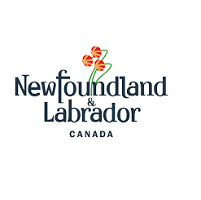KMZ
Type of resources
Available actions
Topics
Keywords
Contact for the resource
Provided by
Formats
Representation types
Update frequencies
status
-

Health Care centres in Newfoundland and Labrador.
-

Individual facilities with a specific geographic location for each reporting BC Greenhouse Gas Emissions. Part of the set of data for Industrial Facility Greenhouse Gas Emission Summaries as currently published for 2010, 2011, 2012 and 2013 by the Director under authority of s.29 of the Reporting Regulation (under authority of the Greenhouse Gas Emission Reduction (Cap and Trade) Act with full confidentiality processes completed.
-

Ferry Terminals
-
Canada has the longest coastline in the world, measuring 243,790 kilometers. Many of our waterways along the coastline have to be dredged regularly to keep shipping channels and harbours open and safe for navigation; and this material is sometimes best disposed of at sea. Schedule 5 of the Canadian Environmental Protection Act, 1999 (CEPA) defines an exclusive list of materials and substances suitable for disposal at sea in Canada, which is in accordance with the London Protocol (1996). They are: dredged material, fish waste resulting from industrial fish processing operations, ships or platforms, inert and inorganic geological matter, uncontaminated organic matter of natural origin, and bulky substances. The disposal of any substance into the sea, on the seabed, in the subsoil of the seabed, or onto ice, from a ship, an aircraft, a platform or other structure is not allowed unless a permit is issued by the Environment and Climate Change Canada (ECCC) Disposal at Sea Program. Incineration at sea, as well as importing or exporting a substance for disposal at sea is also prohibited. More information on Disposal at Sea is available at: https://www.canada.ca/en/environment-climate-change/services/disposal-at-sea.html The Active Disposal at Sea Sites in Canadian Waters dataset provides spatial and related information of at-sea disposal sites approved for use in Canada in the last ten years. Any additional use of a disposal site must be conducted in accordance with the terms and conditions of a valid Disposal at Sea permit. The dataset may be of use in relation to Disposal at Sea permit applications. For some Disposal at Sea permit applications the data may be of use in assessing serious harm to fish under the Fisheries Act and assessing interference with navigation under the Navigation Protection Act.
-

Public Libraries
-

STR - Facilities and structures (structure)Man-made construction. For example, resources describing buildings, museums, churches, schools, hospitals, factories, housing, monuments, and towers.
-

Hospitals
-

BiologicEcologic ISO Feature Dataset symbolization and publication. September 5, 2017.
-

This file contains the regional boundaries for the five Ministry regions. It is currently available as a .kmz (a compressed .kml file). The Ministry no longer uses a 'regional' model for service delivery. As such, this is just maintained for historical purposes.
-

ENV - Environment and conservation (environment)Environmental resources, protection, and conservation. For example, resources describing pollution, waste storage and treatment, environmental impact assessment, environmental risk, and nature reserves. )
 Arctic SDI catalogue
Arctic SDI catalogue